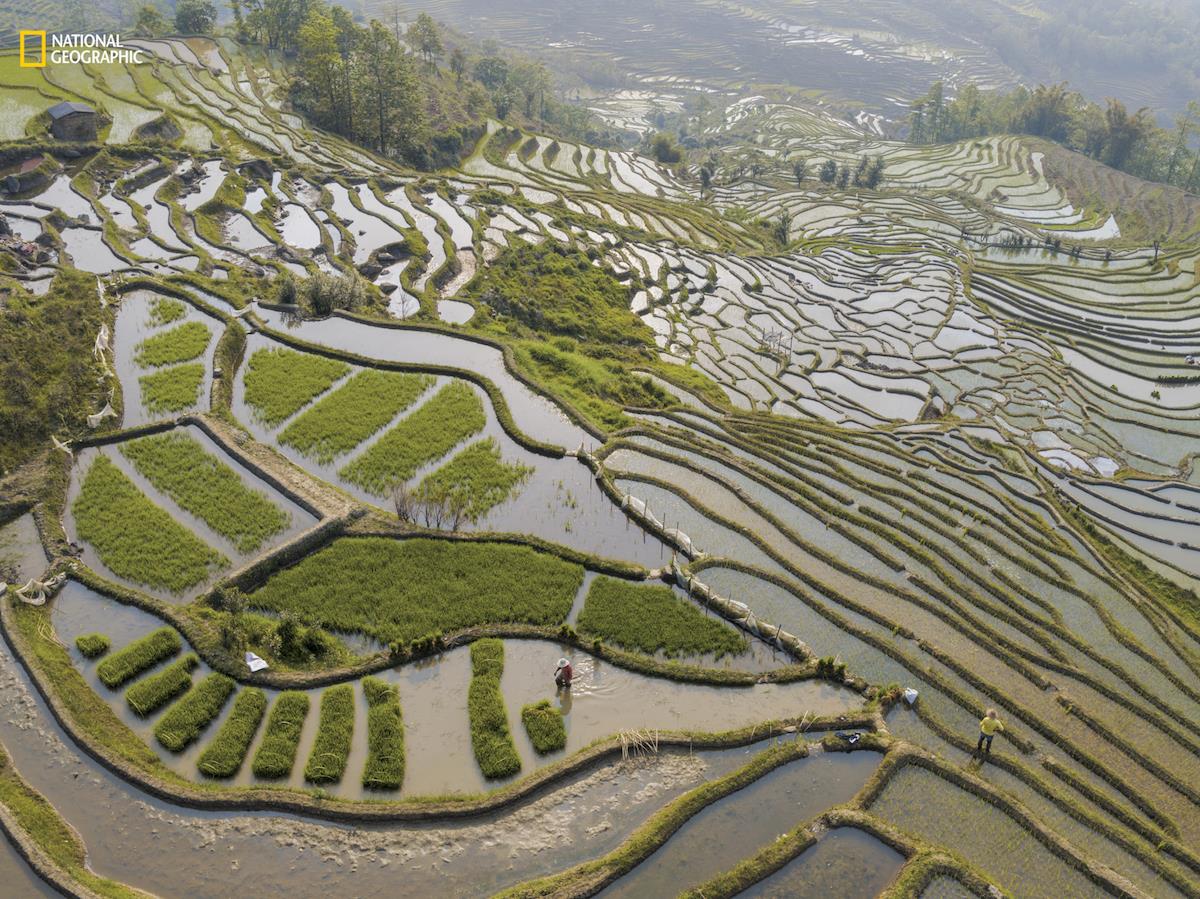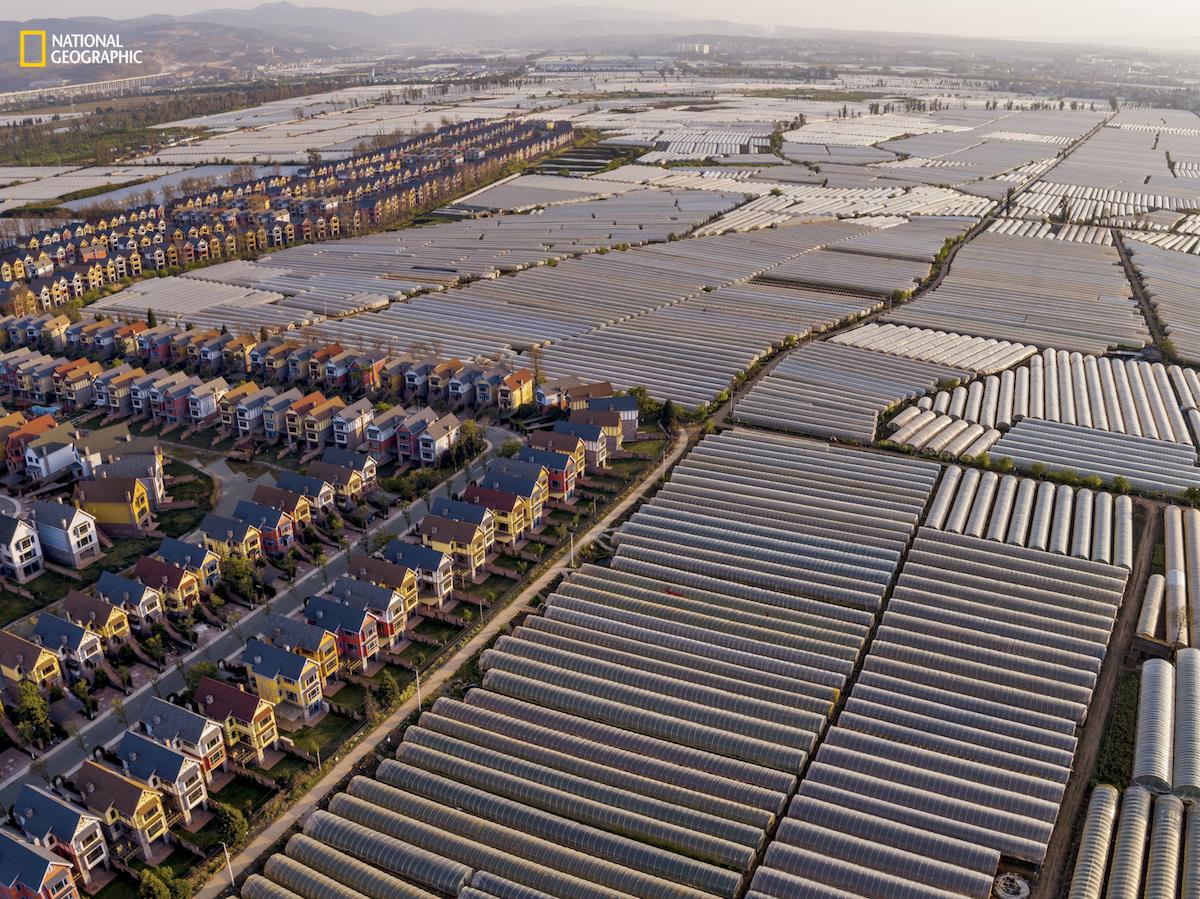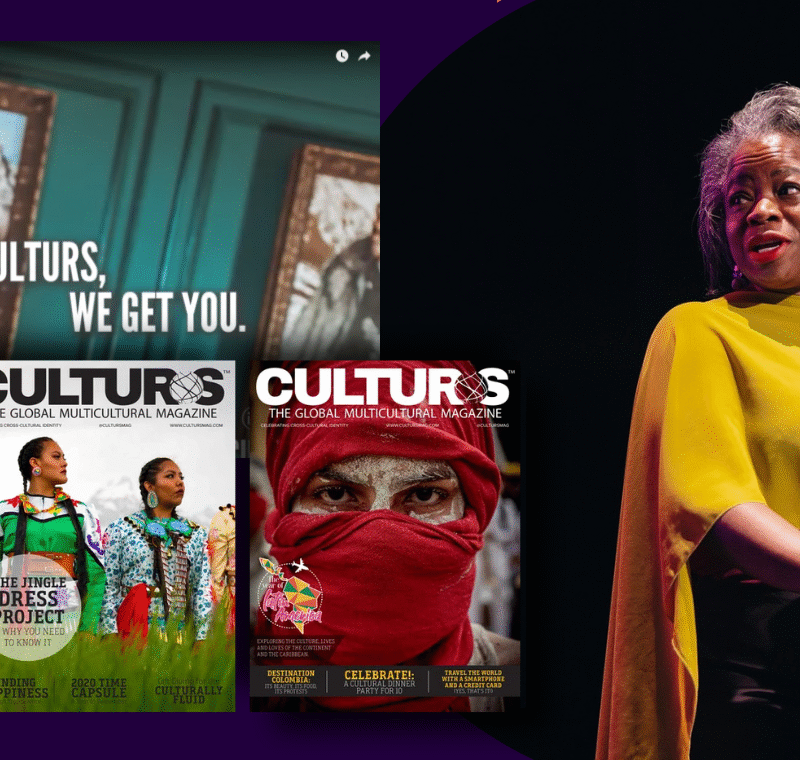How drones get impossible shots for Bonnier and National Geographic
Last year, the Poynter Institute taught nearly 400 journalists how to fly drones legally and safely, according to Al Tompkins. In 2017, drones became a proven tool in the journalist’s and photographer’s arsenal, helping document wildfires, floods and hurricanes, among other things.
For FIPP members Bonnier and National Geographic, drones, also known as unmanned aerial vehicles (UAVs) are an essential storytelling tool and a necessary feature a wide variety of shoots, especially in remote and far flung areas of the world.
Field & Stream
Bonnier’s Field & Stream produced drone videos for their Facebook page, mostly centred around waterfowl hunting to show the audience what the settings look like from a duck’s-eye view. “What the drone did was it got us up, almost from the goose’s perspective, to see what we couldn’t,” said Michael R. Shea, Field & Stream editor-at-large, who shot the drone video. “It was very different looking at it on the ground.”
For example, one of his drone videos for Facebook featured a snow goose spread, Shea explained. “We had trucks with big 20-foot travel trailers full of decoys, and we could see on the ground that we were leaving tire tracks in the field,” he said. “When we got up at 300 feet, it was glaring, because we could see these upstate New York fields for miles, and ours was the only one that was scarred black with muddy ruts from the truck tires. It immediately looked unnatural and worked against us when trying to decoy birds.”
The drone video turned into service journalism in that it highlighted a lot of teachable moments – from the way they set decoys, to tweaks to the decoy spread to make it more effective, to setting defined routes for trucks – for the Field & Stream audience.
Shooting drone video allowed Shea to get footage from a perspective and of areas that would be otherwise inaccessible. “Whereas with the drones, we still have restrictions based on the airspace, but you’re really kind of unchained,” he explained. “(Drones) give you a macro view of the playing field.”
The Facebook videos were hits with the Field & Stream audience. “I think is the sweet spot with drone footage, and why our videos did so well, is they provided strong teaching points for goose and duck hunters. They were more than just neat aerial footage,” Shea said. “We showed hunters how to improve their setup, based on what we learned from that aerial perspective. It’s classic service journalism, really.”
Sport Fishing Television
Bonnier’s Sport Fishing Television (SFTV) presents cinematic portraits of the world’s top fisheries, and profiles the captains, locals and families whose lives connect to them, according to Shawn Bean, producer and editorial director for Bonnier Corp.’s Active Interest Network brands.
“When compared to other fishing and outdoor shows, SFTV has two clear differentiating factors: storytelling and cinematography,” he explained. “We aspire to create nature documentaries with fishing as the centrepiece. A big part of accomplishing that is using drones. For us, drones are a beautiful mix of technology, cinematography and guerrilla journalism.”
Bean explained that SFTV uses drones on most of their episodes, including those shot in Cape Cod, North Carolina, Miami, Panama, Belize, Mexico and Alaska. “The best saltwater fishing is not happening next to a marina or a metropolitan coastline – places that are easily accessible. We’re talking about remote places within remote places: oil rigs 70 miles offshore in Venice, Louisiana, a mangrove maze in Ambergris Caye, Belize.”
Using drones offers accessibility and versatility in areas that are remote, Bean said.
“In the old days, which aren’t that old, you’d need to rent a helicopter and hire a pilot. You’d have to work around their availability, schedule and rules,” he said. “We can’t work that way. You can’t schedule the fish to show up when you want – they don’t know we’re making a TV show.”
Drones also open up new possibilities for the show’s audience. “A couple years ago, we created a slogan for SFTV: “fishing like you’ve never seen it.” And that has stuck with us,” Bean explained. “Fishing has taken us to some of the most remote spots on Earth, and drones have allowed us to bring our viewers with us. We’ve captured breaching whales, schools of fish, packs of wild horses, colonies of sea lions, mountaintop waterfalls – and drones made all of those incredible moments possible.”
And, their audience loves it. The feedback has been tremendous, Bean said. “We are on the Discovery Channel this year, which has been huge. It’s the network that turned nature into a work of art. That’s what we’re trying to do with SFTV.”
National Geographic
At National Geographic, many of their departments use drones for storytelling purposes, primarily for journalistic and multimedia storytelling. National Geographic uses drone footage in many of their videos, from whales feeding in the ocean to epic establishing shots for their original video series. On the magazine side, photographers often use drones for video and stills while on assignment for magazine features.
For example, photographer George Steinmetz used drones in China for a feature in the February 2018 issue, Feeding China, and multimedia visual storyteller Luca Locatelli used drones in a recent story from the September 2017 issue, This Tiny Country Feeds the World.

Photograph by George Steinmetz / National Geographic
George Steinmetz, who has been shooting video with drones for about three years, says drone photography and video allow him to get perspectives he’d otherwise get flying an ultralight or by paragliding. “It is a lot safer in urban environments and it allows me to get down low. It’s also extremely portable and easy to get through an airport. A drone can also stop in the air and hover, whereas a helicopter can’t,” he said.
Drones were an ideal tool for photographer George Steinmetz’s assignment, Feeding China, given the scale he was dealing with, he explained. Drones allowed him to better tell the story, by getting a camera to places he wouldn’t be able to access otherwise. “By using drones, I was able to both photograph and see a number of things, views, subjects, as opposed to just the one in front of me.”
Some of the locations he visited, including farms, greenhouses, factories, cafeterias, were the largest in the world. “For example, dairy farm was the biggest in the world with more than 35,000 cows,” he said. “You could not see much from the ground, nor comprehend the size, the hundreds of acres the farm occupied, unless you had a drone. When I was photographing indoors, the spaces were so large, with armies and armies of people, that even then a drone was the best tool.”

Photograph by George Steinmetz / National Geographic
Steinmetz explained he used drones for several different shots, depending on what he wanted to accomplish. Sometimes, he wanted to get up high to look at something on a grid, and other times he wanted to fly over rice terraces to get to a good observation point. “The drone allowed me to come up close to someone harvesting rice, for example, being miles away, literally, but only feet from the subject. The drone was able to give me an incredible range of flexibility,” he said.
For Feeding China, Steinmetz shot dozens of hours of footage in various locations via multiple flights, he explained. “I flew them both inside (i.e. factories) and outside. I flew inside a shrimp shelling factory and saw hundreds of workers in uniforms in rows and rows shelling shrimps, which I would not have been able to do on my own.”

Photograph by George Steinmetz / National Geographic
Drones were also the perfect tool for Luca Locatelli’s National Geographic assignment, This Tiny Country Feeds the World. The feature focused on The Netherlands’ sustainable and innovative agricultural industry that has made it the world’s second largest exporter of food and is chock full of stunning aerial footage shot by drones. “Drones are actually amazing for this as you don’t have the usual visual obstacles around you, drone technology allowed me to achieve the best perspective for the story—that’s what I love most,” he said.
Locatelli, who has been shooting images for the last couple of years for National Geographic with the help of drones, has also been flying drones for many years. “As a photographer before using drones I was trying always to understand what the best point of view for making the picture was and sometimes I had to climb high or rent helicopters or small airplanes to get the right shot – drone technology allowed me to bring my camera in the sky and decide the best point of view for the shoot.”
In the case of This Tiny Country, showcasing the massive scale of farming technology was important to the photographer. “(Being) able to get a point of view from the sky giving a sense of proportion to the number of greenhouses or other installations there in the Netherlands was a crucial part of the story,” Locatelli said.
For the feature, he shot some footage using drones, but was more focused on photography. “I’ve shot videos only when it was irresistible, like a couple of hours but I shot much more still photography,” he said.
The worst challenge Locatelli had in the Netherlands was the weather, he said. “Often foggy and rainy, when finally the sky clears up the chance of strong winds is high: flying drones there was not an easy task. I have to be honest—one of my drones fell in a lake in the middle of a shoot after a wind gust, and many days I couldn’t fly because of the unsafe weather.”
Drones, said Locatelli, are often more convenient than helicopters to get the same perspective. “Often they are the easiest way to realize the same shot with a lower budget and allowed me to take images that were not possible otherwise,” he said. “In this story I managed to shoot inside a massive greenhouse used to grow lettuce, that would be later used as the opening shot for the story on the National Geographic Magazine’s website. Drones allowed me to push my imagination to make something that wasn’t possible before.”
Restrictions, challenges, and misconceptions
Drone use for commercial purposes around the world has restrictions and rules that photographers and those who want to get into drone journalism need to be familiar with.
Drone use has restrictions, depending on the country you’re in. China, for example, adopted tighter drone rules in 2017, after incidents of drones straying into flight paths.
In the US, hobbyists are allowed, but those who want to fly drones for commercial purposes need to apply to the FAA. However, starting in 2018, the FAA announced the rollout of something called LAANC, the low-altitude authorisation and notification capability, an airspace waiver that allows pilots near instantaneous access to airspace. Before the announcement, drone pilots had to wait 90 days to get permission from the FAA.
In the UK, the Civil Aviation Authority offers rules and regulations for both recreational drone flights and commercial operations with small drones. There are a number of rules for recreational drone flights, surrounding where pilots can fly their drones, how close they can fly it to people or objects, and limitations to how high they can fly. Permission must be granted for flying over congested areas, open air crowds or within 50 metres of private properties.
There is a misconception that operating a drone is easy, according to SFTV’s Bean. “It’s not. There are rooftops and tall trees and bodies of water filled with the mistakes of inexperienced drone pilots,” he said.
Steinmetz said drones are fabulous storytelling tools, but publishers need the person operating the drone to know what he/she is doing. “That skill set needs to exist,” he said. “You don’t have much time when you’re flying the drone and need to think about your subject matter just as much as when you’re using a camera.”
Those interested in drone photography and using drones to film remote areas should also decide whether a drone is the right tool for the job.
“You have to ask yourself, what is the right perspective for this?” Steinmetz asked. “Sometimes I could use a drone and realise, it’s much easier to just get up on a ladder! You really have to think ahead and plan things out- think about what is best for the topic and engineer it backwards. Put the idea before the tool (the tool follows the idea).”
The style of a media company’s, a magazine’s, or an individual photographer’s photography has a great influence on this decision, Locatelli said. “When you are flying you are keeping a distance with the subjects on the ground, therefore it’s very subjective and depends on the kind of photography you are producing,” he said. “I personally don’t like when drones are used as a gimmick to produce images. I like when they are part of a vision of the photographer on the story, when the images produced are organically part of the aesthetics.”
Takeaways and lessons
For publishers looking to show or tell their audiences new narratives, teach them something, or give them access to areas previously inaccessible, drones may be the perfect tool.
Field & Stream’s Shea suggests for those starting out to know the limitations of their drones. He says he flies his drone relatively slowly because he can always speed it up later in the editing process. “Often I’ll shoot it in 4k at a high frame rate, so if I get the props in the shot or something looks squirrelly, I can crop and pan mistakes out, and still have a full resolution final 1080p video.”
For National Geographic’s Steinmetz, having a back-up drone is essential.
“I have two drones (just like 2 cameras) and always have a plan B,” he said. “Drones are evolving so fast that the model gets old so quickly, and drones are also expensive. Also, mind your fingers! It’s a flying blender and you can really hurt someone if you’re not careful. I never hand land them either.”
Other tips include avoiding flying drones over people and keeping them in your line of sight. “Be respectful of people, don’t put a drone anywhere you wouldn’t want to go yourself. Use common sense!”
National Geographic’s Locatelli suggests the most important tip when flying a drone is to be careful. “Every time you are planning a shoot with a drone you have to be very aware of the environment around you,” he said. “You need to choose the right location to take off and plan your flight. This is the best advice one can give to a photographer intending to get into drone imagery.”
More like this
[Long read] How to get into VR and 360º videos
Video strategies for a visual world – with AJ+ and AwesomenessTV
Condé Nast and Joe Media on creating a sustainable video strategy
[Congress speaker Q&A] Drones taking flight… responsibly
Bonnier to reveal streaming service combining articles, TV documentaries
Setting up a formal marketplace for drone content
NatGeo’s Patrick Witty: From “striping the film” to “iPhone journalism”
Gary E. Knell to succeed Declan Moore as new National Geographic Partners CEO







